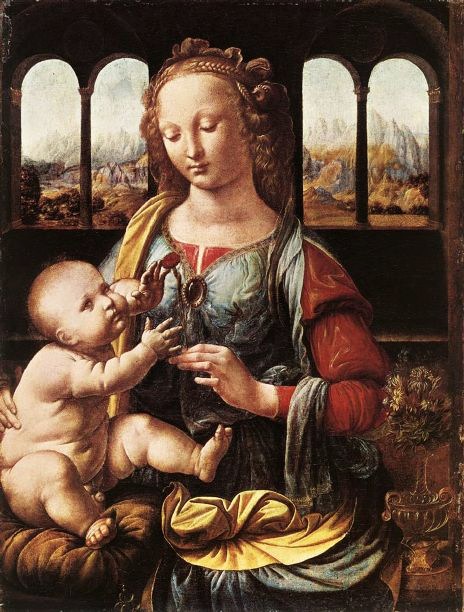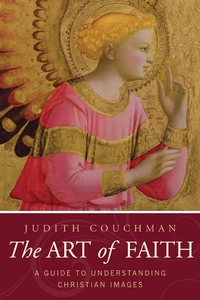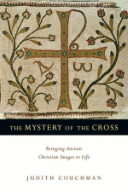In Christian symbolism the essence of the flower—its growing characteristics, its shape, color, its essence—coordinate to make a unified whole.—Gertrude Grace Sill
In the fifteenth century Leonardo da Vinci painted a lesser-known work simply titled Madonna and Child. In this painting a pensive Madonna handed a red carnation to a chubby Jesus who struggled to grasp it. A shadow cast over the carnation.
For contemporary viewers, this painting offers another variation on thousands of Mary-and-Jesus images hung in museums, galleries, churches, and homes. We might note that Mary wore the clothing and jewelry of the Renaissance, but miss the painting’s passioned theme wrapped in a singular, common flower. But Renaissance art
spectators—especially Christian viewers—would have eyed and identified the message. They recognized the sermon built into blood-red petals.
In traditional Christian art, a flower seldom existed just for
decoration. Botanical images—from a single green plant to a flower garden spilling with riotous color—exuded symbolism. Often this symbolism endowed a plant or flower with several interpretations. For example, a carnation’s meaning varied with its color. A bright-red carnation symbolized either heavenly or earthly love. The Greeks called the carnation the “flower of God,” and it frequently graced depictions of the Virgin Mary with her holy child.
The red carnation also reminded viewers of motherly or healing love. In Northern Italian Renaissance paintings, a vase of carnations indicated divine love. Drawn from Flemish tradition, the carnation also appeared in betrothal and marriage portraits during the fifteenth through seventeenth centuries.
If one flower carried so much symbolism, we can barely imagine the
meaning of a painted flourishing garden, woodland forest, or flower garland. But we can contemplate the interpretation of a few flowers or plants and how they contributed to the moral or devotional meaning of a mosaic, painting, or tapestry. As we enjoy botanical beauty, we can also appreciate its exquisite messages, delicately designed to grow the spiritual senses.
To learn more about the symbolism in Christian art, read The Art of Faith by Judith Couchman. Available at www.paracletepress.com. Use the code Judith 25 for a 25 percent discount. Offer good through December 30, 2012.

 RSS Feed
RSS Feed



